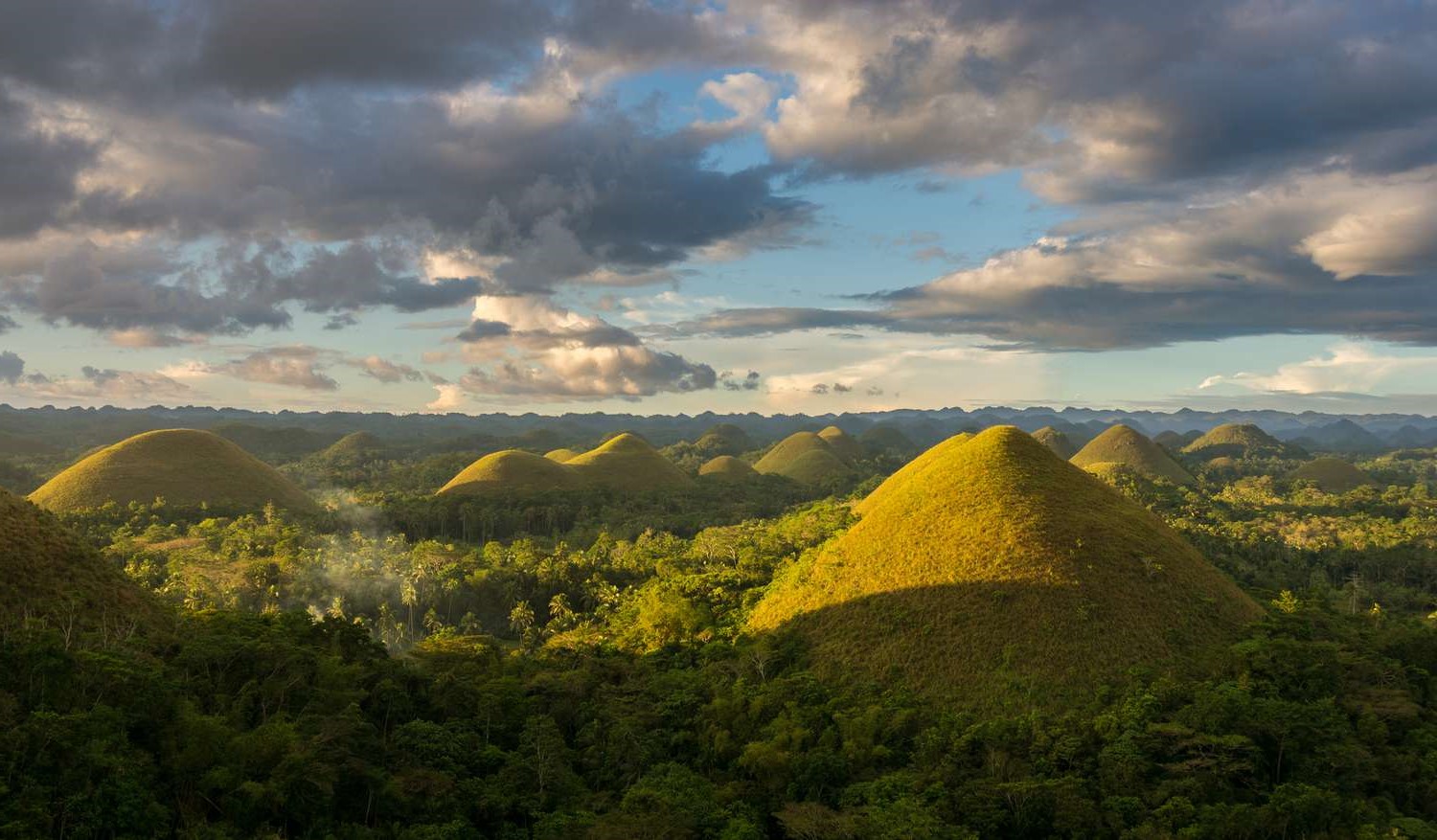
Ever wondered why the Philippines is often dubbed as the Pearl of the Orient Seas? Well, you're about to find out! This archipelago, with its more than 7,000 islands, is not just a haven for beach lovers but also a treasure trove of history, culture, and yes, some pretty quirky facts. From its world-renowned beaches to its historical significance in global events, the Philippines is a country that never ceases to amaze. But it's not all about the stunning landscapes or the delicious cuisine; there are plenty of fascinating tidbits that make this country truly unique. Ready to get your mind blown by some of the most intriguing facts about the Philippines? Let's dive in and uncover the wonders that make this country a must-visit destination and a topic of endless fascination.
Key Takeaways:
- The Philippines is a diverse archipelago with over 7,600 islands, rich in culture and biodiversity. From unique festivals to savory dishes, it's a country worth exploring and celebrating.
- With a vibrant history and a focus on conservation and innovation, the Philippines is a melting pot of traditions and creativity. Its natural beauty and dynamic population make it a captivating destination.
Understanding the Philippines
Nestled in Southeast Asia, the Philippines is an archipelago that boasts a rich tapestry of cultural heritage and natural beauty. This country, with its welcoming people and vibrant traditions, offers a unique blend of indigenous and foreign influences, primarily Spanish and American, due to its colonial past.
-
The Philippines is composed of over 7,600 islands, making it one of the largest archipelagos in the world. Only about 2,000 islands are inhabited, showcasing the country's vast unexplored territories.
-
Filipino and English are the official languages, reflecting the country's colonial history and its adaptation to globalization. Various regions also have their own languages and dialects, with Tagalog being the most widely spoken.
The Heart of Biodiversity
The Philippines is not just known for its white-sand beaches and historical sites; it's also a hotspot for biodiversity. The country's unique geographical setup contributes to its rich flora and fauna, some of which are found nowhere else on Earth.
-
It's home to the world's smallest volcano, Taal Volcano. Despite its size, Taal remains one of the most active volcanoes in the Philippines.
-
The archipelago is part of the Coral Triangle, the global center of marine biodiversity. This area has more species of fish and corals than anywhere else in the world's oceans.
-
The Philippine Eagle, one of the largest and most powerful birds in the world, can only be found in the Philippines. This majestic bird is also critically endangered.
A Melting Pot of Cultures
Filipinos are known for their hospitality, a trait that's deeply embedded in their culture. The country's history is a colorful mosaic of indigenous practices and influences from Spain, the United States, and neighboring Asian countries.
-
The Philippines was the first country in Asia to gain independence from colonial rule, declaring its sovereignty from Spain on June 12, 1898.
-
Christmas in the Philippines is the longest holiday celebration in the world, starting as early as September and lasting until the Feast of the Epiphany in January.
-
Sinulog, Ati-Atihan, and Dinagyang are just a few of the festivals that showcase the Filipinos' love for vibrant celebrations, each with its own unique blend of indigenous and Christian traditions.
Culinary Adventures
Filipino cuisine is as diverse as its culture, offering a blend of sweet, sour, and salty flavors. The country's culinary scene is a testament to its rich history, with each dish telling a story of the Philippines' past and present.
-
Adobo, considered the unofficial national dish, reflects the Spanish influence on Filipino cooking. This savory dish is made by marinating meat in vinegar, soy sauce, and garlic.
-
Balut, a fertilized duck egg with a nearly developed embryo inside, is a popular street food. While it may seem unusual to some, it's a delicacy enjoyed by many Filipinos.
-
Halo-halo, which means "mix-mix" in Tagalog, is a beloved Filipino dessert. This sweet treat is a mixture of shaved ice, evaporated milk, and various ingredients like sweet beans, coconut, and fruits, topped with ice cream or leche flan.
Economic Landscape
The Philippines has shown remarkable economic growth and resilience over the years. With a young and dynamic population, the country is making strides in various sectors, including technology, agriculture, and tourism.
-
The BPO (Business Process Outsourcing) industry is a significant contributor to the Philippine economy, employing over a million Filipinos.
-
The Philippines is one of the world's largest producers of coconuts, supplying a substantial portion of the global demand for coconut products.
-
Remittances from Overseas Filipino Workers (OFWs) play a crucial role in the country's economy, making up a significant percentage of the GDP.
Environmental Challenges and Conservation
Despite its natural beauty and biodiversity, the Philippines faces several environmental challenges. Efforts are being made to address issues such as deforestation, marine pollution, and climate change.
-
The country is one of the most vulnerable to climate change, experiencing an increasing number of severe weather events like typhoons and floods.
-
Reforestation projects and marine protected areas are among the initiatives being undertaken to preserve the Philippines' natural heritage.
-
The Tubbataha Reefs Natural Park, a UNESCO World Heritage Site, is a marine sanctuary in the Sulu Sea. It's a prime example of the Philippines' commitment to conservation.
A Hub for Innovation and Creativity
The Philippines is not just about its past; it's also a country that's rapidly embracing the future. With a vibrant startup ecosystem and a creative industry that's gaining international recognition, Filipinos are proving to be innovators and artists in their own right.
-
The country has a thriving arts scene, with Filipino designers, musicians, and filmmakers gaining accolades on the international stage.
-
Technology startups are flourishing, driven by the Philippines' young and tech-savvy population. These ventures are addressing both local and global challenges, from education to financial inclusion.
-
The Philippines' unique blend of cultures, history, and innovation makes it a fascinating country not just to visit, but to watch as it continues to evolve on the global stage.
A Final Glimpse at the Pearl of the Orient Seas
Diving into the heart of Southeast Asia, we've uncovered the vibrant tapestry that is the Philippines. From its breathtaking landscapes and rich biodiversity to its colorful festivals and historical depth, this archipelago offers a world of wonders. We've seen how its unique blend of cultures shapes its food, traditions, and the warm hospitality of its people. The resilience and spirit of Filipinos shine through, making it a truly captivating destination. Whether it's the stunning beaches of Boracay, the ancient rice terraces of Banaue, or the bustling streets of Manila, each corner tells a story. So, if you're looking for an adventure that feeds the soul and warms the heart, the Philippines beckons with open arms. Remember, these facts are just the start; the real magic lies in experiencing it all firsthand.
Frequently Asked Questions
Was this page helpful?
Our commitment to delivering trustworthy and engaging content is at the heart of what we do. Each fact on our site is contributed by real users like you, bringing a wealth of diverse insights and information. To ensure the highest standards of accuracy and reliability, our dedicated editors meticulously review each submission. This process guarantees that the facts we share are not only fascinating but also credible. Trust in our commitment to quality and authenticity as you explore and learn with us.


